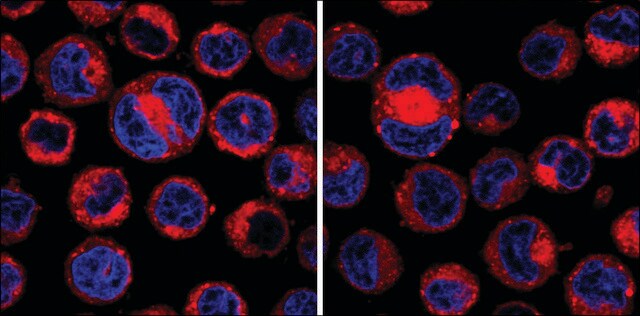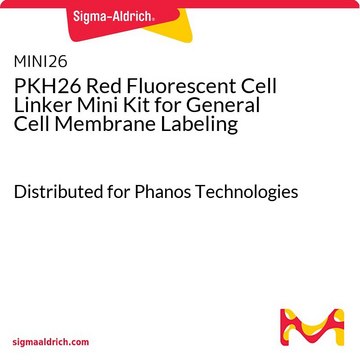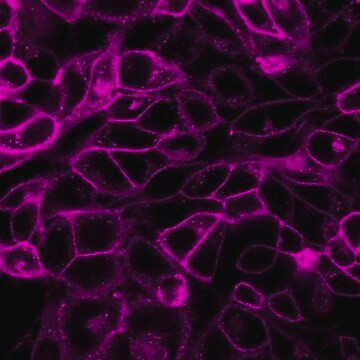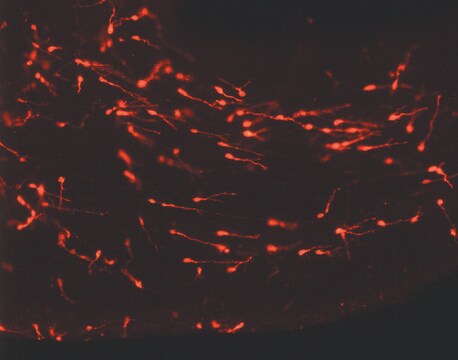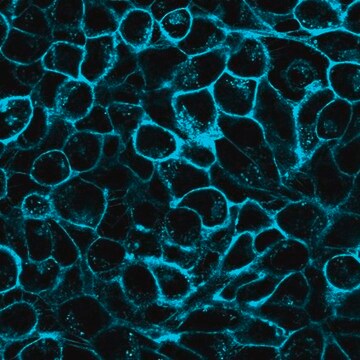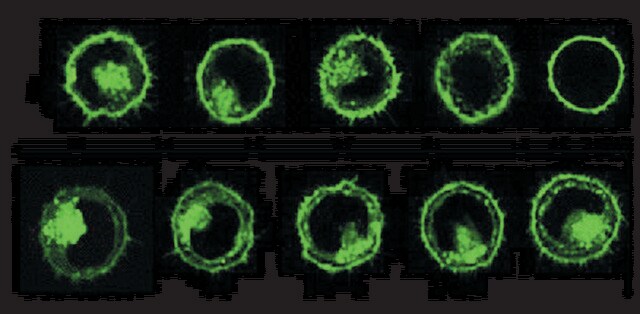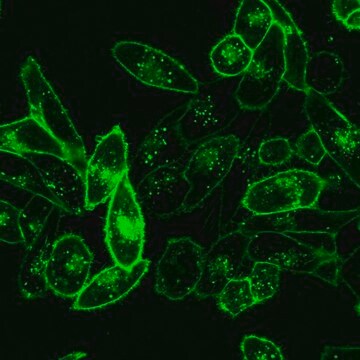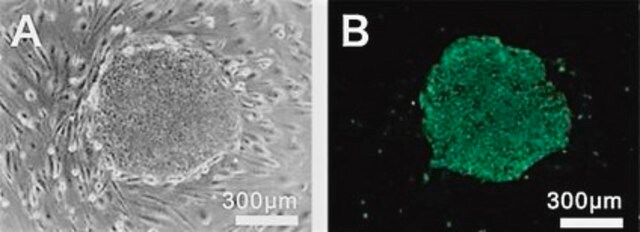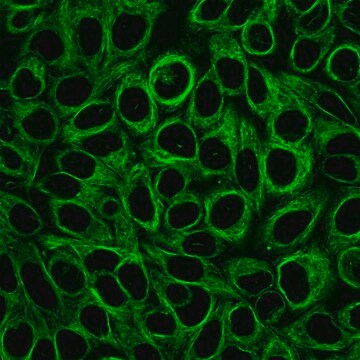MIDCLARET
CellVue® Claret Far Red Fluorescent Cell Linker Midi Kit for General Membrane Labeling
Distributed for Phanos Technologies
Synonyme(s) :
Far red membrane probe kit
About This Item
Produits recommandés
Fabricant/nom de marque
Distributed for Phanos Technologies
Niveau de qualité
Conditions de stockage
protect from light
Technique(s)
flow cytometry: suitable
Fluorescence
λex 655 nm; λem 675 nm
Application(s)
cell analysis
detection
Méthode de détection
fluorometric
Conditions d'expédition
ambient
Température de stockage
room temp
Application
Actions biochimiques/physiologiques
Conditionnement
Liaison
Informations légales
Patent Information
Mention d'avertissement
Danger
Mentions de danger
Conseils de prudence
Classification des risques
Eye Irrit. 2 - Flam. Liq. 2
Classe de danger pour l'eau (WGK)
WGK 1
Faites votre choix parmi les versions les plus récentes :
Déjà en possession de ce produit ?
Retrouvez la documentation relative aux produits que vous avez récemment achetés dans la Bibliothèque de documents.
Les clients ont également consulté
Articles
Lipophilic cell tracking dyes enable cancer biologists to track tumor and immune cell functions both in vitro and in vivo. Read the article to choose a right membrane dye kit for cell tracking and proliferation monitoring.
Optimal staining is a key component for studying tumorigenesis and progression. Learn useful tips and techniques for dye applications, including examples from recent studies.
PKH and CellVue® Fluorescent Cell Linker Kits provide fluorescent labeling of live cells over an extended period of time, with no apparent toxic effects.
Notre équipe de scientifiques dispose d'une expérience dans tous les secteurs de la recherche, notamment en sciences de la vie, science des matériaux, synthèse chimique, chromatographie, analyse et dans de nombreux autres domaines..
Contacter notre Service technique